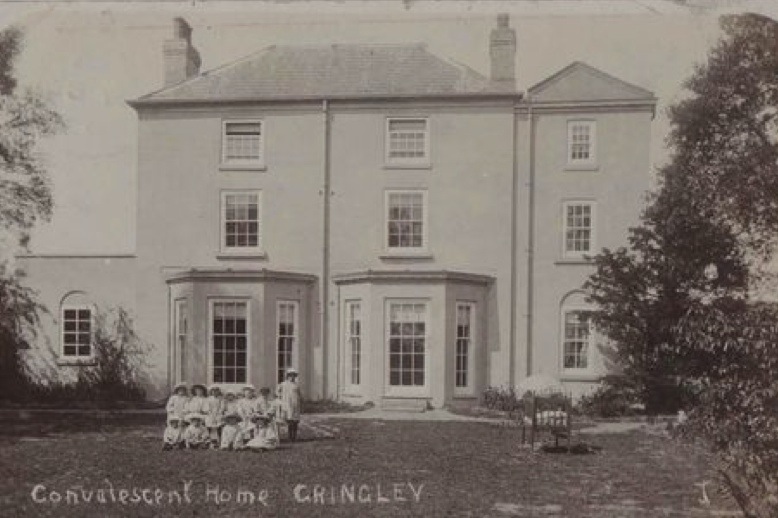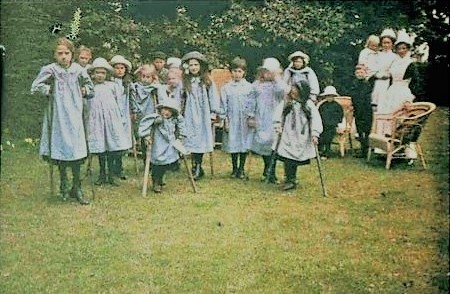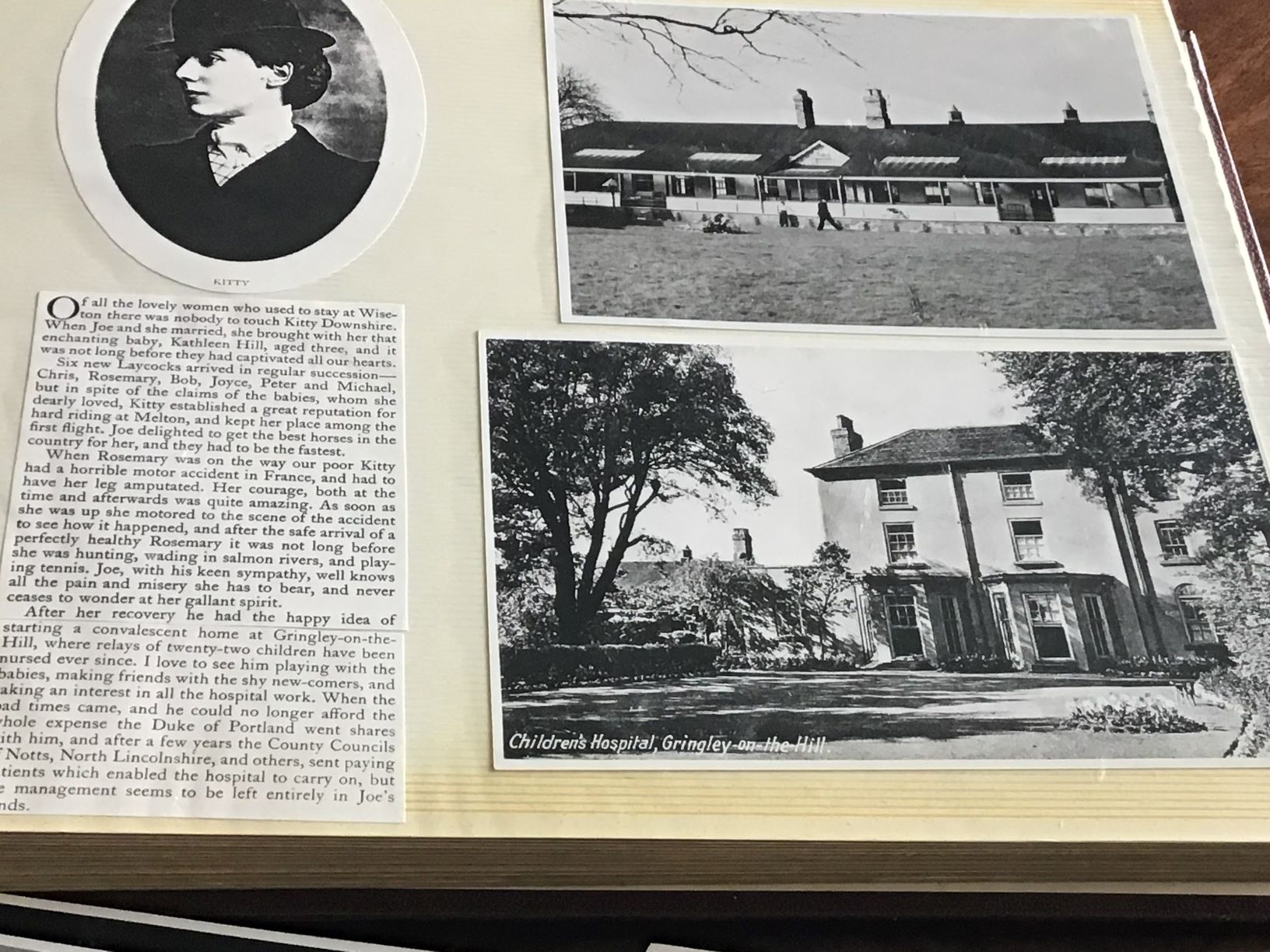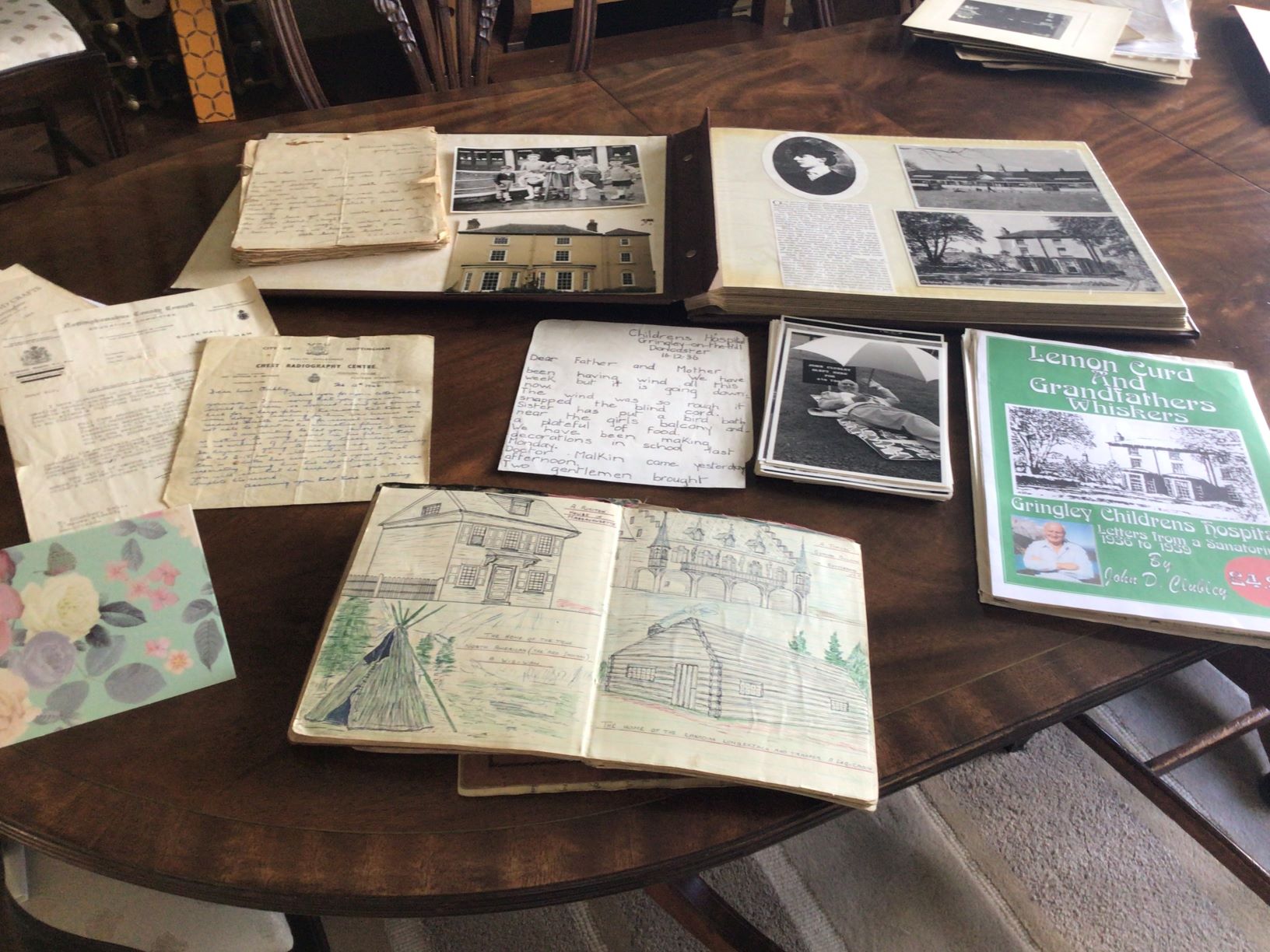GRINGLEY TB HOSPITAL, NOW GRINGLEY HALL
In the late 1800s Gringley Hall was a private residence called “The Laurels”. In 1906 it was bought by Joseph Laycock of Wiseton Hall who converted the house into a convalescent home because ‘he wished to do something to help restore the health of sick children living in towns and impoverished rural areas of the surrounding industrial district’. In 1912 the hospital became a sanatorium or hospital for children with tuberculosis of the bones. The main house was used as a nurses’ home, and the hospital wing (now demolished) was built to the west of the house. Only the school room remains from the old TB hospital days.


It is just possible to see the roof of the children's ward, now demolished on the left of the photo behind the tree

C1912. Children in the garden
A change of emphasis
In February 1912, an article in the British Journal of Nursing indicates that the convalescent home for young patients at Gringley is to be reopened as a modern hospital containing 20 beds for the treatment of turbercular children. Major Laycock and the Duke of Portland provided finance for the venture.
Moving forward to the pre Second World War period, we are fortunate to have detailed information written by John Clubley. As an 8 year old boy he was admitted to the hospital where he remained for 3 years. His book contains beautiful line drawings and stories of day-to-day life at Gringley Sanatorium.

The photo on the front cover of his book shows children on the outside verandah (now demolished). There were no antibiotics at this time so the only treatment for non pulmonary TB was fresh air, sunshine, good food and rest. In some instances children were strapped onto frames or put into plaster to hold their bodies in position to facilitate healing.

1938. John Clubley to the right of the photo

C1930s. Boy blowing bubbles in an outside bed - children were outside in all weathers

C1930s. Child in outside bed with a sun shade overhead

Babies on the lawn with a nurse (undated)
As children remained at the hospital in some cases for years, a school room was constructed in the grounds.

'Up-children' with their teacher outside the school room
(Up-children were children who did not need to be in bed)

The School Room
The school room still remains - the wards would have been to the right of the photo

1955. Children and staff enjoying Easter Egg time
As medical treatments advanced and antibiotics such as streptamycin proved effective in the treatment of tuberculosis hospitals such as that at Gringley began to close. A press article in December 1955 confirms the closure of the hospital in the following year as there was an insufficient number of patients to justify it continuing.

January 1956. Vehicles leaving the TB Hospital on its closure

1983. John Clubley (4th from the left in the photo) at a reunion of past patients and staff at Gringley Hall hosted by Mr & Mrs Threlfall
John Clubley's story and some wonderful photos are found in 'Lemon Curd and Grandfather's Whiskers, Letters from a Sanatorium 1936/1939'. Limited copies available from Gringley History Club. £5.
Photographs and Memorabilia from John Clubley's Archive
We reported the sad passing of John Clubley's wife Sylvia last year. Sylvia was enthusiastic about the History Club and kindly let us have books and papers from her husband's archive spanning his years as a young patient at Gringley TB Hospital in the 1930s. We were recently contacted by John and Sylvia's niece Julia, who had found some more memorabilia and a box of books while clearing the family home. John's experience of being a child patient at Gringley Hall TB Hospital was documented in his book Lemon Curd & Grandfather's Whiskers. John recovered from the disease and went on to become an Architect. His drawing skills are clearly evident in his school books. Our very grateful thanks to Julia for gathering together the items and boxing them up for postage to us.
The picture below is particularly interesting as the photograph to the right shows the ward and outside beds on the verandah at Gringley Hall - now no longer there of course.


